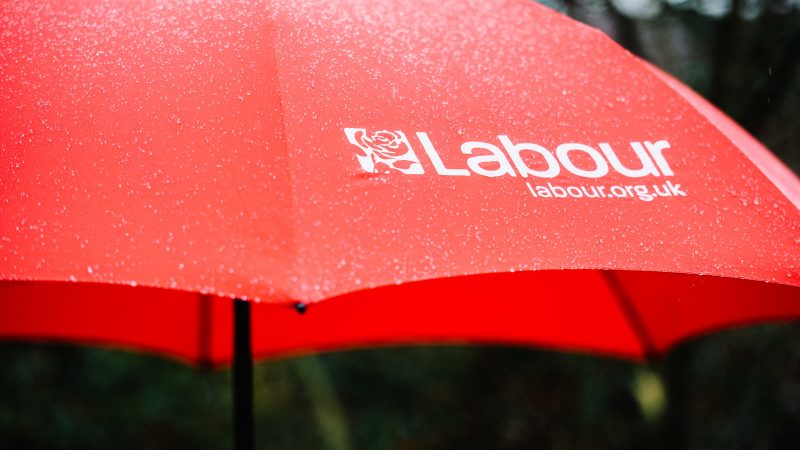
The Labour Party has revealed that it ended 2022 with a financial surplus of almost £3m, with increased revenue from commercial sources, fundraising and donations seeing the party’s annual income surpass that of the Tories by more than £16m.
Labour’s financial statements for 2022 – published by the Electoral Commission today alongside those of the UK’s other political parties – show that the party’s income last year was £47,171,000, up from £45,564,000 in 2021.
The party’s expenditure in 2022 was £44,450,000, down from £50,765,000 the previous year, giving the party an end-of-year surplus of £2,722,000. By contrast, the party ended 2021 with a deficit of £5,205,000, up from £1,009,000 the previous year.
According to the Conservative Party’s financial statements, the party ended 2022 with a deficit of £2,380,000, having raised £30,682,000 and spent £33,062,000.
The treasurers’ report released by Labour alongside its financial statements said the figures showed the party had made a “healthy” surplus, adding that the “commitment and hard work” of staff enabled the party to “overcome” challenges and “maximise” opportunities to “exceed expectations across a number of fronts”.
The report identified the potential for a snap general election “during a turbulent time at the top of the government” as one challenge the party faced during 2022.
“Continuously being in a state of election-readiness can be demanding on the party’s resources and staff, however the party remains ready to fight a general election to deliver a Labour government at any time,” it said.
Labour’s commercial revenue rose substantially in 2022 to £4,149,000, up from £2,977,000 during the previous year and £423,000 in 2020. The party’s income from donations also rose – from £9,933,000 to £10,498,000 – as did revenue raised from fundraising, which more than trebled from £200,000 to £640,000.
But the party’s income from membership fell from £16,187,000 to £15,962,000, with the party reporting that its total membership at the end of 2022 was 407,445, down from 432,213 a year previously.
The fall continues a downward trend in total membership since 2019 but is smaller than that in 2021, when membership fell by more than 90,000.
The treasurers’ report said membership remains the party’s “primary source of income”. It noted the fall in income over the last year but claimed that the final total “exceeded targets as we welcomed new members and benefitted from an improved rate of retention”.
But a Momentum spokesperson declared that it is “saddening and worrying” to see Labour’s membership fall for a third consecutive year, saying: “When Keir Starmer ran for leader, he celebrated Labour’s mass membership and pledged to build on the people-powered party built after 2015.
“Yet since then, he has turned Labour back towards corporate donors and interests, rejecting member and union demands for popular, urgent policies like public ownership, while undermining their rights by stitching up parliamentary selections for loyalists.
“Britain already has a party funded by the few and serving the few: the Tories. We need a Labour Party funded by and run for the many, one that is true to its trade union roots and its founding mission.”
According to its financial statements, Labour’s running costs were down considerably in 2022 – from £40,694,000 to £34,794,000 – contributing to the overall fall in the party’s annual expenditure. Reduced spending on staff was the primary factor, falling more than £6m from £26,066,000 to £19,955,000.
General secretary David Evans told staff in a meeting in July 2021 that the poor financial situation of the party meant its reserves were down to just one month’s payroll. Evans said Labour’s finances had suffered due to lost members and using funds to deal with antisemitism cases.
Voluntary severance was offered to staff with the aim of making at least 90 redundant. LabourList was told at the time that staff were offered three weeks of pay for every year served.
Labour’s latest financial statements revealed that the party ended the year with more staff than at the end of 2021 – up from 331 to 394. But the party’s average number of staff over the course of last year was 363, compared to 399 during the previous year.
The treasurers’ report said reduced running costs this year were evidence of “some of the difficult decisions taken by the party in recent years to reduce the cost base”.
But the report added that income generated “grew to some of its highest levels outside of an election year”. It highlighted annual conference as “the marquee event of the year”, saying the gathering saw “unprecedented demand and led to significant growth in commercial income”.
A party spokesperson said: “Thanks to Keir Starmer’s leadership, the Labour Party saw significant financial growth throughout 2022, and our finances have gone from strength to strength this year as we set out our five missions to transform Britain.
“The Labour Party is a changed party that is serious about getting into government and building a better Britain.”




More from LabourList
‘It was the best of times, it was the worst of times… my first four months as Editor’
‘Labour have a credible path to ending Britain’s dependence on food banks and have taken the first steps along it’
‘Ending homelessness must be Labour’s moral mission — and this time we must finish the job’